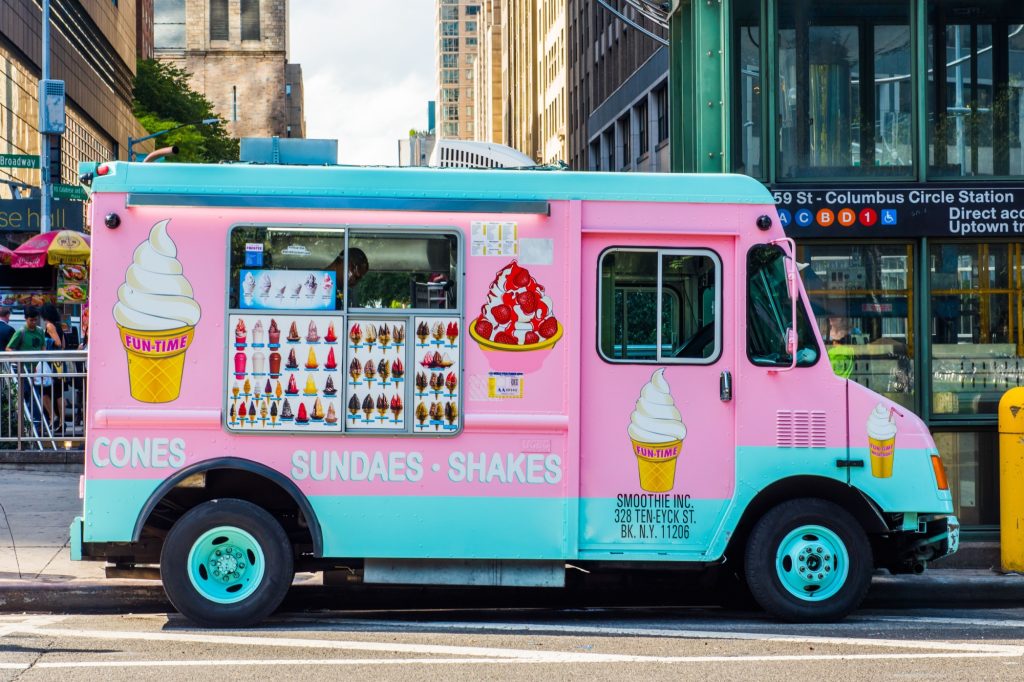Ice cream trucks didn’t pop up out of nowhere. They came from pushcarts & patents, along with some rather interesting technology. The city rules also helped to change the routes, too, and here’s the unexpected history behind the ice cream truck. What’s the first ice cream truck memory you have?
Featured Image Credit: Shutterstock.
Pushcarts and penny ice paved the way
Before there were trucks, sweaty guys used to push carts with giant blocks of ice & chipped treats that they sold for a penny or two. These were in almost every city. However, the cities didn’t love it. Health inspectors & permits made selling harder, but those pushers created the first idea of mobile ice cream.
Good Humor’s 1920 Youngstown trucks
Harry Burt was an Ohio candy maker who wasn’t satisfied just making bars. Instead, he put freezers in trucks & handed out sticks covered in chocolate, while also making sure his drivers were dressed in crisp white. He used handbells bolted right to the truck to get people’s attention. Soon enough, the sound became so iconic that kids would drop everything at the first ring.
Burt, Epperson, and a 1920s license deal
Burt had patents for his chocolate-covered bars. However, Frank Epperson had his Popsicle patent too, with both thinking the other person was stepping on toes. Yet they decided to avoid endless court fights. In 1925, they signed a deal where Popsicle received fruit-ice and Burt got cream-based bars.
How music joined the route
At first, clanging bells did the job, but then came those catchy tunes. Vendors began adding little music boxes before transitioning into full speaker systems that played short public-domain songs on repeat. Some used ragtime riffs & others borrowed nursery melodies. Either way, neighborhoods could hear their truck long before they saw it rolling onto their block.
Permits and noise rules
But ice cream truck drivers couldn’t merely drive where they wanted to. No, cities like New York created permit caps & set rules on how loud, as well as how often, trucks could blast their music. Playing the jingle too late at night meant you risked a fine. Essentially, these local laws decided which blocks trucks could park at, and when.
Refrigerated units mounted to trucks
Previously, cold storage involved blocks of ice melting away fast, which was as messy & unreliable as it sounds. And then came Frederick McKinley Jones’s invention. He designed a gasoline-powered refrigeration unit that sat on trucks to keep everything properly frozen for hours, with his “Model C” becoming the standard for food haulers across the U.S.
Soft-serve machines
By the mid-century, ice cream was no longer just in bars or cups, as trucks began showing up with soft-serve dispensers built inside. The vendors simply pulled the handle and could swirl a cone right there at the curb. This was all thanks to new freezers that kept mixes stable enough to serve instantly, completely changing what a “truck cone” meant. The modern ice cream truck was truly born.
The following sources were consulted in the preparation of this article:
- Informal Urbanism: Legal Ambiguity, Uncertainty, and the Management of Street Vending in New York City
- Patented process of making frozen confections
- The Frozen Sucker War: Good Humor v. Popsicle
- A Folklorist Looks at Ice Cream Vans
- A 100-Year Review: Milestones in the development of frozen desserts
- Frederick McKinley Jones: National Inventors Hall of Fame
- Municipal Regulation of Food Vendors in a Time of Crisis: The Case of New York City


